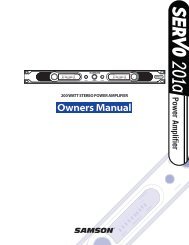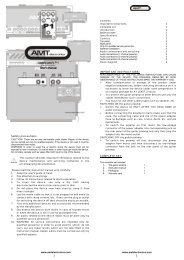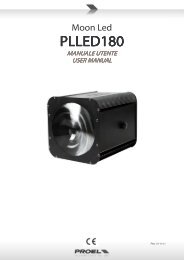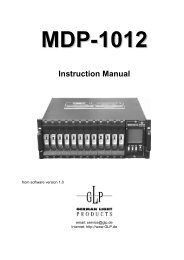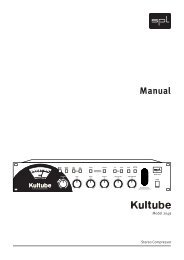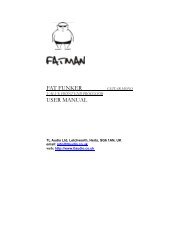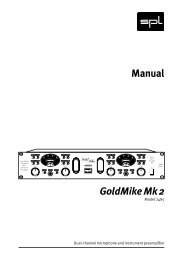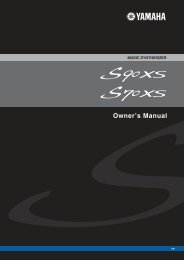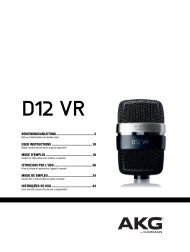Create successful ePaper yourself
Turn your PDF publications into a flip-book with our unique Google optimized e-Paper software.
22<br />
QUICKSTART MANUAL<br />
Knob Functions<br />
Before we proceed with this walkthrough of the basic functions of the <strong>Virus</strong> <strong>TI</strong> <strong>Snow</strong>, please select patch<br />
RAM8 8-1 “Tutorial 1”.<br />
••<br />
Volume<br />
As boring as it is important, the Volume knob controls the overall levels of the Output L/R socket. If you have<br />
your <strong>Virus</strong> connected to a mixing desk, it is probably best to leave Volume at maximum (127), and adjust the<br />
levels on your mixer to suit. This will give you the best signal-to-noise ratio. Always turn Volume right down<br />
when first connecting a pair of headphones.<br />
Please note, this will not have any effect when you are using the USB outs in <strong>Virus</strong> Control.<br />
••<br />
Patch Volume (SHIFT+Value 1)<br />
Use this to adjust the overall volume of the currently selected patch. Be careful not to set this too high, as it<br />
may result in ‘clipping’ a highly-undesirable kind of distortion that never sounds good.<br />
••<br />
Transpose (SHIFT+Value 2)<br />
Use this to adjust the pitch of the currently selected patch in octaves.<br />
••<br />
Panorama (SHIFT+Value 3)<br />
Panorama is the parameter which controls where you perceive the sound to be positioned in a stereo speaker<br />
system. The default value of +0 will make the sound appear to come from directly in between, negative<br />
values push it to the left, and positive values push it to the right.<br />
••<br />
Cutoff<br />
This is where the fun with synths really begins. Turn the knob all the way up to 127 and hold a note down on<br />
your keyboard. Now, slowly sweep the knob down to 0 and back again - you should notice the buzzy sound<br />
of the “Tutorial 1” patch get increasingly dull, until it disappears altogether, and then open back up to full<br />
buzziness as you return to 127. You have just heard a ‘lowpass’ filter in action.<br />
••<br />
Resonance<br />
Set this knob at around 12 o’ clock, and then sweep the Cutoff knob in exactly the same way as before.<br />
Increasing the resonance of the filter amplifies frequencies around the cutoff frequency, making it ‘speak’ as<br />
you throw the cutoff knob around. A little caution is advised when applying high values of resonance, as the<br />
resulting sound can damage your speakers if you are not careful, especially as you sweep the cutoff around<br />
the lower values!<br />
••<br />
Filter Envelope (SHIFT+Cutoff)<br />
Hold down the SHIFT button, and turn the Cutoff knob to adjust the Decay and Release parameters of the<br />
Filter Envelope at the same time. The higher the value you choose here, the longer the cutoff of the filter will



